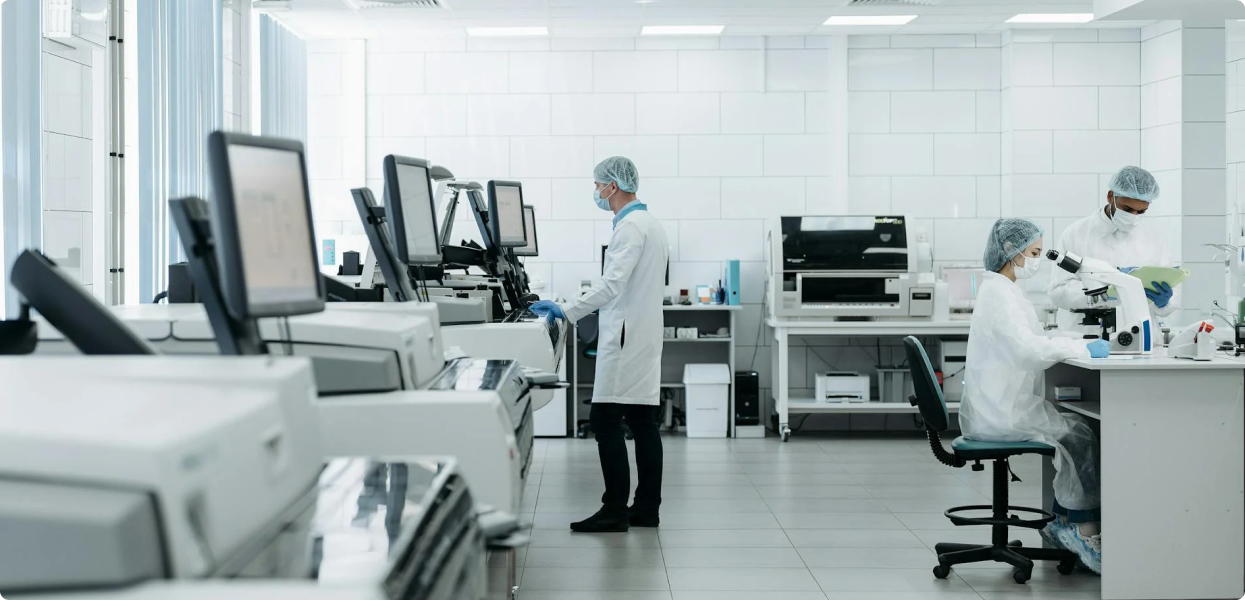With long-standing production processes in place, and lofty daily throughput requirements, finding the right time to rework and innovate a manufacturing workflow can be a challenge. However, this means that manufacturers often hold on to legacy processes for far too long — processes that actually throttle production capacity and generate excessive operational costs. A common example of this is delaying the switch from manual quality control (QC) processes to automated inspection.
For many manufacturers, manual inspection is simply how they’ve always done it. They’re likely familiar with the concept of automated inspection and its benefits, but perhaps don’t quite know when is the right time to make the switch, and are fearful of causing too much production downtime while implementing a new technology.
In this post, we’ll cover the three warning signs that suggest a need for AI-powered automated inspection, and share some tips to make the transition more approachable for manufacturers.
1. Rising Defect Rates and Quality Issues
In today’s manufacturing environments, 68% of factory defects are believed to be caused by human error. With increasing market demands, QC inspectors are being pushed to their limits, and are regularly experiencing stress and fatigue on the job. This — coupled with varying degrees of experience and training — introduces significant levels of inaccuracy and inconsistency into a manufacturer’s QC process.
Frequent defects, in turn, drive up the costs associated with processing rework and disposing of scrap. Or, in worst case scenarios, missed defects can even lead to consumer harm, product recalls, and legal ramifications. Medical device manufacturing alone saw 975 recalls in the United States in 2023, resulting in 283 million recalled units and billions of dollars in financial losses.
Consideration Point:
- High-accuracy, AI-powered inspection systems use computer vision to significantly reduce false decision results and catch defects earlier in the production process, safeguarding your operation and brand reputation. If you’ve had any recall close-calls in the past 5-10 years, or have observed that recalls are on the rise in your industry, it’s likely time to consider automated inspection.
2. Increased Operational Costs and Inefficiencies
Hiring a full staff of QC inspectors is a costly undertaking, and it only gets more and more expensive each year. In the United States, the average salary for a QC inspector now exceeds $89,000 per year, plus all of the ongoing training required to ensure compliance with company and industry policies. Adding further to the labor cost is the ~40% annual attrition that manufacturing companies face on average. Even in low-cost labor countries where manual inspection may seem economical at $5-6 per hour, the cumulative costs of errors — including rework, scrap, and customer dissatisfaction — can far outweigh these savings.
As production volumes increase, scaling manual inspection processes also becomes difficult. There are limits to human inspection capacity, and the likelihood of inspection errors increases significantly with the speed, pressure, and fatigue experienced on a busy production line. Because of this, attempts to accelerate manual inspection processes often introduce unintended negative consequences and ultimately fail.
Consideration Point:
- Automated inspection systems can operate continuously and at high speeds, reducing the need for breaks and removing the inherent throughput throttling of manual inspection processes. If your facility would like to save on labor costs without compromising quality, an AI inspection system is likely a great fit.
3. Compliance and Audit Challenges
In heavily regulated industries such as automotive and medical device manufacturing, strict industry regulations make good record-keeping an essential part of the quality control process. Manufacturers need to consistently meet defined industry quality standards, and compliance audits can happen at any time.
However, when relying on manual inspection processes, QC record-keeping is inherently more error-prone and less comprehensive. Highly granular data collection simply isn’t possible in manual inspection environments, or comes at the great expense of speed and throughput. This means that, in the event of an audit, tracing back to the source of quality issues can be extremely difficult and time-consuming for manufacturers.
Additionally, the consequences of product quality and compliance issues can be severe. Besides the aforementioned risk of a product recall and reputation damage, failing compliance audits can lead to hefty fines, substantial legal fees, and even the suspension or revocation of critical business licenses.
Consideration Point:
- An automated inspection system records and remembers the details of every pass/fail decision — including an image of the inspected component — creating detailed inspection logs for greater quality oversight and audit readiness. If you’re struggling to maintain detailed and accurate QC logs, and suspect an audit would place a huge administrative burden on your team, then automated inspection could be the right solution.
Take the First Step Towards Automated Inspection
If any of these challenges resonate with your current situation, it could be time to upgrade to automated inspection. To recap:
- Automated inspection systems significantly reduce false acceptances/rejections and catch defects earlier in the process, safeguarding your operation and brand reputation
- Automated inspection systems operate continuously at high speeds, reducing operational costs and improving efficiency and throughput.
- Automated inspection systems record every pass/fail decision, creating detailed inspection logs for greater quality oversight and audit readiness
The best way to get started with AI inspection is to work with an experienced machine vision partner to establish a proof of concept (POC). A well-defined POC allows you to test, refine, and analyze the performance of an automated inspection process before committing to roll it out company-wide.
Focus is crucial for a successful POC — starting with just one part or product, on one production line, in one manufacturing facility. This approach allows the machine vision system to become an expert on that one component before moving on to learn the inspection criteria of another component. Your AI inspection initiative can then be scaled in a measured fashion across production lines and facilities as performance targets are reached.
Akridata specializes in high-accuracy AI machine vision modeling for complex manufacturing environments. We make the transition from manual to automated inspection seamless for manufacturers, ensuring quality, compliance, and cost-effectiveness along the way.
If you’d like to discuss the potential benefits of automated quality inspection in your manufacturing environment, reach out to our team today to schedule an exploratory conversation.
Discover how leading manufacturers are reducing defects, increasing efficiency, and cutting costs with AI-powered inspection.
Get The True Cost of Manual Inspection in Manufacturing Whitepaper



No Responses